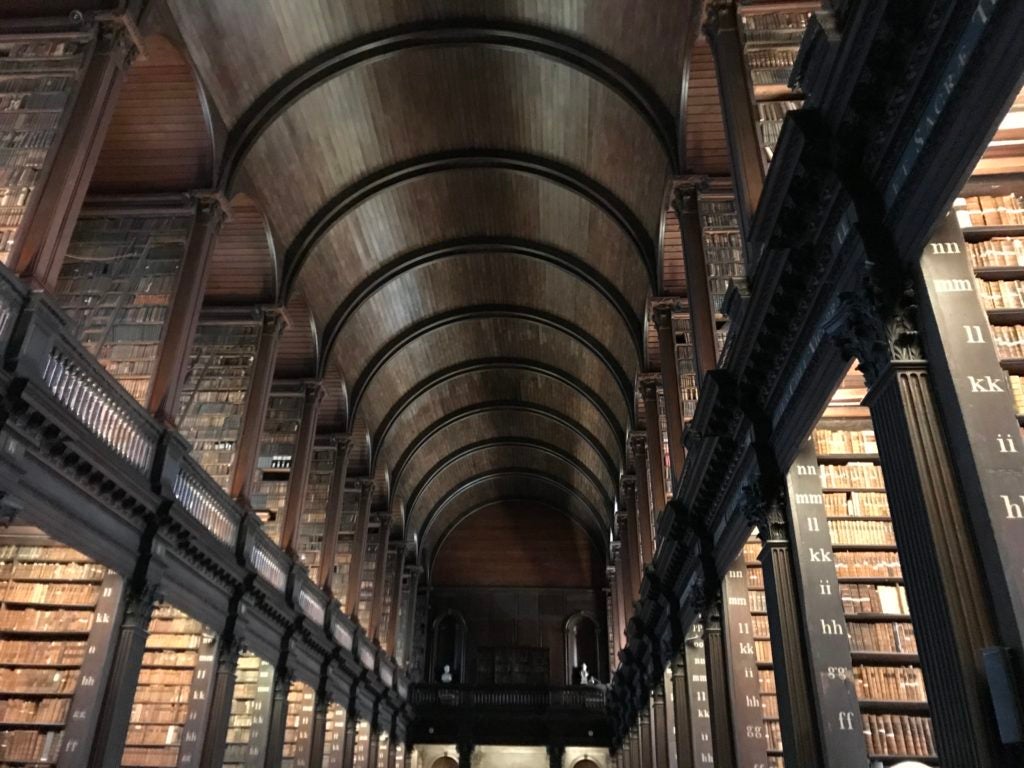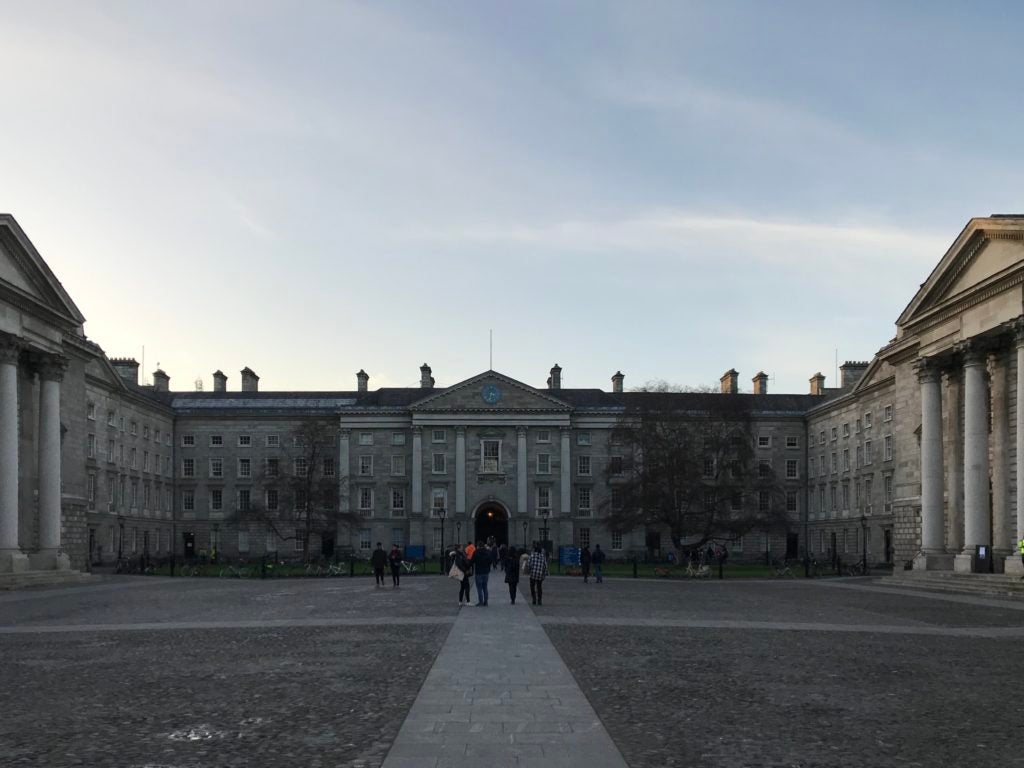Manuscripts and Messiness
David Bennett (G ’20), while completing an MA in English, traveled to Dublin courtesy of a Global Irish Studies Fellowship. He wrote his MA thesis about Samuel Beckett’s rejection of Romantic ideals of nature.
In order to reach the Manuscripts Archive at Trinity College Dublin (TCD), I had to walk through the historic Long Room in the Old Library. The famous room, images of which are practically synonymous with scholarly work, is an excellent appetizer for the works contained in the Manuscripts Archive itself. The Archive is home to over 20,000 documents, focusing especially on records, genealogies, medieval manuscripts, and Irish political history. I was there to examine a different sort of history: the manuscripts of Samuel Beckett, the Irish writer of works like Waiting for Godot. TCD houses several of his fiction works, like drafts of Texts for Nothing and Imagination Dead Imagine, his voluminous correspondence and letters, and the notebooks Beckett created in the 1930s that demonstrate the scope and rigor of his research into subjects as diverse as psychoanalysis, German literary history, and philosophy from the pre-Socratics to the late nineteenth century.

My thesis is primarily concerned with the intersections of Beckett’s fiction and essays with the portrayal of nature in literature and the visual arts. In order to make my arguments about Beckett’s rejection of certain ways of portraying nature (especially Romantic ones), I’ve had to rely primarily on secondary sources that deal with his archive of letters and manuscripts. While helpful, other scholars will necessarily have differing areas of emphasis, particularly where documents like Beckett’s philosophy notes are concerned. What the Manuscripts Archive at TCD and the generous research fellowship provided by the Global Irish Studies department at Georgetown provided me was the opportunity to get deeply involved with the writings themselves, in all their unfiltered messiness.

A particularly revelatory experience occurred when I examined the microfilm of Beckett’s work on the first of his Texts for Nothing, a collection of 13 texts written from 1950-1952. In the TCD archive, I was able to trace the development of “Texts for Nothing 1” and pay close attention to the otherwise inaccessible artistic choices that went into these difficult, puzzling, and rewarding pieces of short prose. The first of the materials available on microfilm is a lightly edited handwritten draft, which functioned as preparatory material for the much more careful rewriting that begins in the two typescripts that follow. In these typewritten manuscripts, I encountered dozens of carefully rearranged sentences and crossed out and replaced words. These remarkable changes were not only surprising to me but have never been accounted for in the secondary literature. As a result of my encounter with Beckett’s drafts, I changed the focus of part of my thesis from Beckett’s finished project to the laborious and shifting nature of their composition. Not only has my manuscript experience given me a more thorough and rigorous understanding of Beckett’s work, but it also gave me an invaluable insight into the process of one of the twentieth century’s greatest writers.
